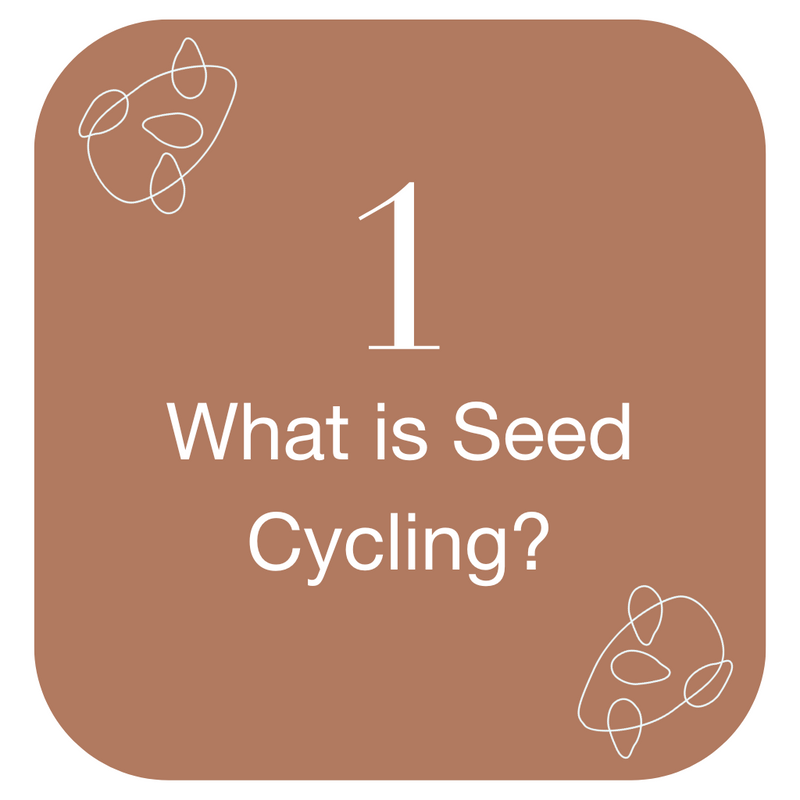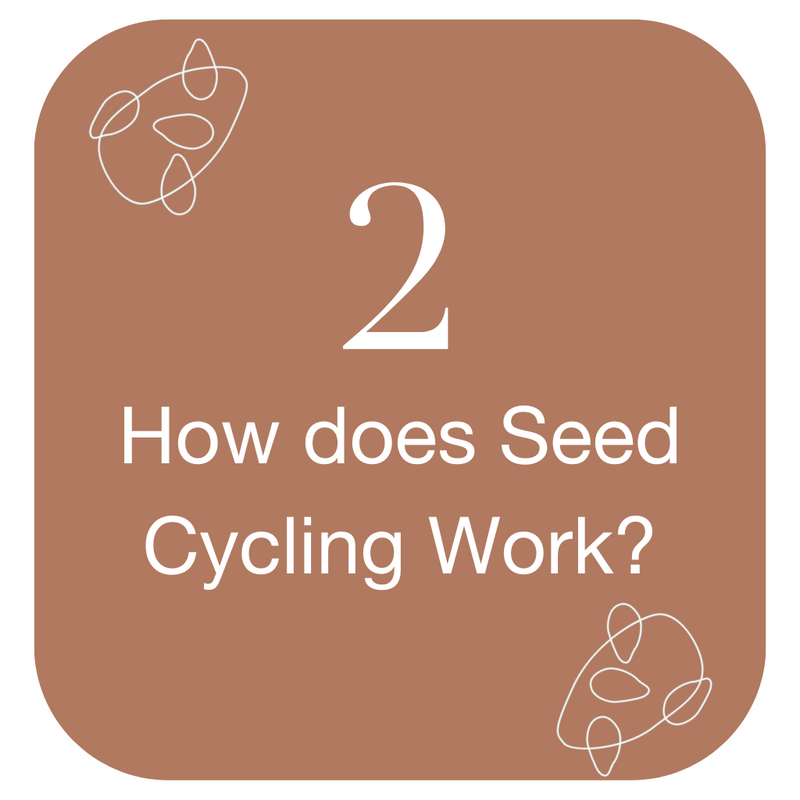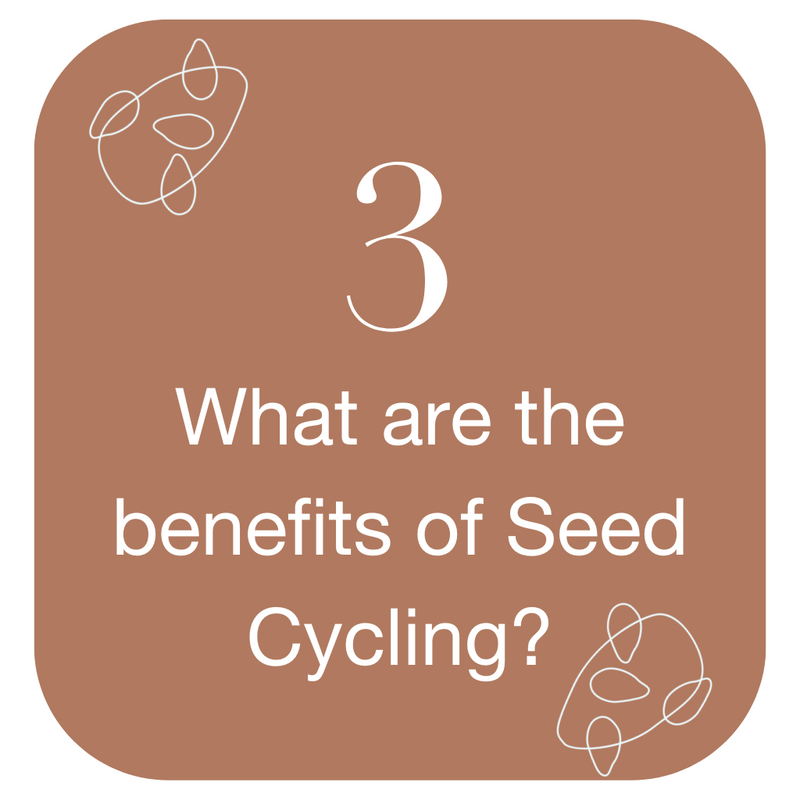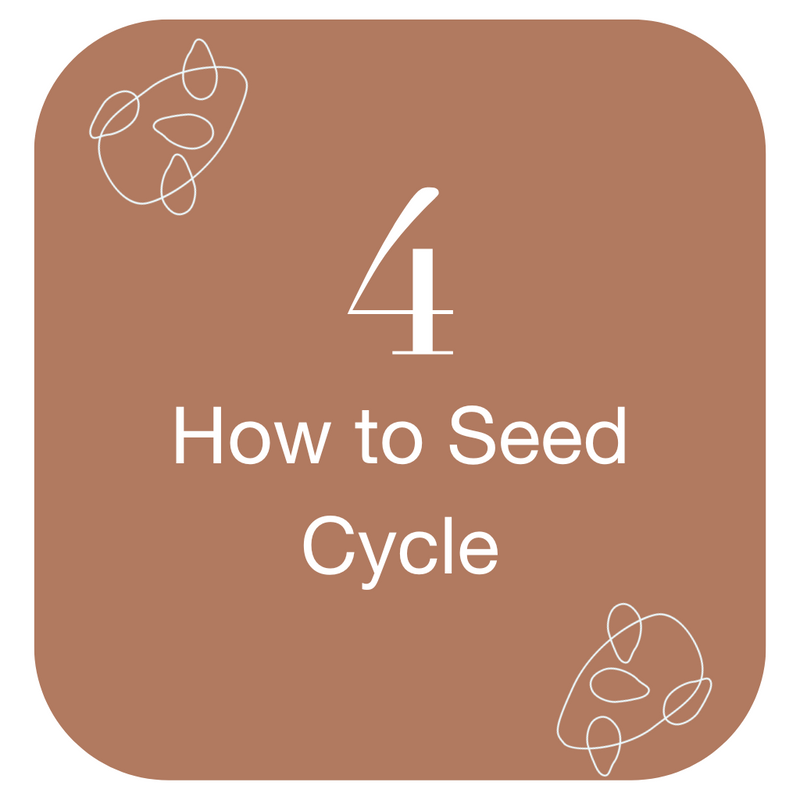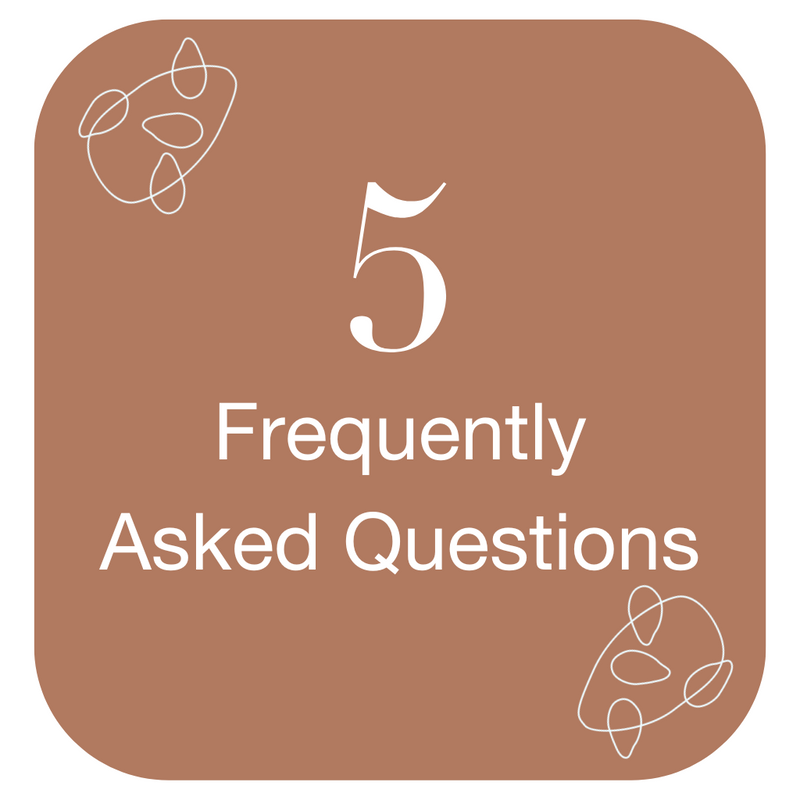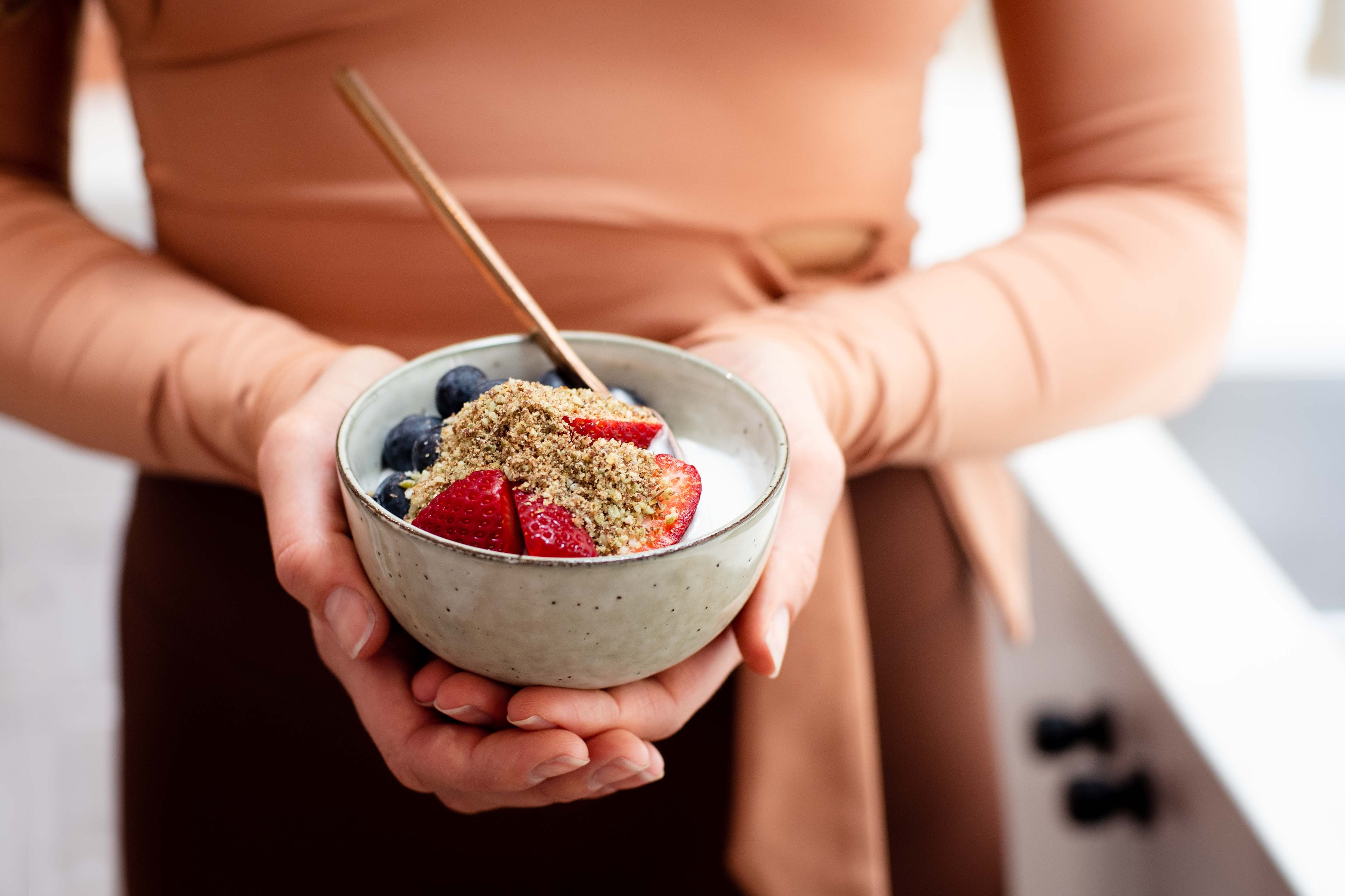
How does Seed Cycling work?
Unlocking Hormonal Balance: The Power of Seed Cycling
Seed cycling, an intricate fusion of ancient practices and contemporary research, emerges as a potent solution for harmonising women's hormones. The holistic method provides a natural remedy for a range of issues, including PMS, hormonal acne, irregular menstrual cycles, and menopausal discomfort
With roots in Chinese Medicine and considered a Food as Medicine practice seed cycling involves consuming 4 key seeds - flaxseeds, pumpkin seeds, sunflower seeds and sesame seeds at different stages of the menstrual cycle or moon cycling with the Lunar calendar. Widely endorsed by naturopaths, nutritionists, and acupuncturists, seed cycling is gaining credibility as a holistic method for women's hormone health.
The Scientific Validation of Seed Cycling
There is an extensive body of research that demonstrate the benefits of specific seeds for women’s hormone health and health conditions which we are excited to explore below.
We are thrilled to see new research conducted on seed cycling as a practice including a promising review published in January 2021 on seed cycling for PCOS and more recently in June 2023 on seed cycling for PCOS. These study's highlight the growing body of evidence supporting the practice of seed cycling.
Seed Cycling for Hormone Health
Women's hormonal patterns fluctuate daily, influenced by internal and external factors like stress, diet, exercise, sleep, and environmental toxins. These fluctuations can result in hormonal imbalances, leading to a range of challenging symptoms such as PMS, irregular periods, hormonal acne, PCOS, thyroid issues, and chronic fatigue.
Seed cycling plays a pivotal role in supporting the monthly hormonal cycle, alleviating symptoms like mood swings, cramps, cravings, sore breasts, and hormonal acne. Moreover, it aids in addressing issues like anovulation, irregular cycles, and amenorrhea. The four key seeds involved possess active components that support hormone production and regulation during both the follicular and luteal phases.
Doctors and Hormone Experts on Seed Cycling
“Here at The Natural Nutritionist (TNN) we use seed cycling as a natural technique to stimulate and balance the sex hormones required for menstruation, through consumption of different types of seeds throughout the month.” - The Natural Nutritionist, published March, 2023.
“Seed cycling has long been used to support women's hormones by supplying them with the nutrients they need at specific phases of their cycle. I recommend seed cycling for hormone balance in both my clinic and book, Beyond the Pill, because it is an effective and gentle way to support women's hormones. Seed cycling provides the specific nutrients to help build your hormones.
As you'll read in my book, Beyond the Pill, I recommend seed cycling at any stage in a woman's life and find it especially helpful for women coming off of birth control or struggling with post-birth control syndrome symptoms like acne, irregular periods, or new onset of PMS. To use seed cycling you need to know a few things. You’ll be tracking your menstrual cycle and changing your seeds to match the phase you are in. Day one is the first day you experience your period (there is a flow). That will be the day you begin the follicular phase seeds and you’ll continue through ovulation or day 14.” – Dr Jolene Brighten, Functional Medicine Naturopathic Physician, published January 9, 2019.
"Try seed cycling, Some women have experienced reduction in hormonal symptoms by consuming certain seeds as part of their cyclical routine.” - Alisa Vitti In The Flow, published in 2020
Food as Medicine Research
Food as Medicine or Medical Nutrition Therapy is an evidence based practice built on the knowledge that food and diet play important roles in disease prevention and management. The concept refers to prioritising foods that have medicinal properties, often due to high levels of a particular micronutrient or biomolecule — sometimes referred to as Functional Foods.
Functional Foods is defined as food products possessing the appearance of traditional food and included in the daily diet. These products provide physiological benefit and/or can reduce the risk of noncommunicable diseases. These include a variety of herbs and spices, legumes, nuts and seeds, whole grains, and fruits and vegetables.
The Food as Medicine approach to health management challenges the construct of conventional medicine, which relies primarily on technological medical advancements to manage health and disease with pharmaceutical drugs. It is important to note that Food as Medicine is not a cure-all or a stand-alone remedy for all health conditions and is often used in conjunction with appropriate medical therapy. Chronic diseases in particular are complex and may be attributed to non-diet related causes.
Research on Seed Cycling Seeds
Flaxseeds
Flaxseeds are the most widely studied lignan containing seeds. Lignans have been found to have both estrogen supportive and protective benefits. The lignans in flaxseeds have been associated a longer luteal phase, that is the time from ovulation until the start of your next period as well as reducing the number of anovulatory cycles.
This means consuming flaxseeds can increase the likelihood of regular ovulation. Studies have also shown flaxseeds can improve your progesterone to estrogen ration in the luteal phase and reduce excess estrogen levels. So, if you are skipping periods or have low progesterone adding flaxseed to your diet is a great option.
Pumpkin Seeds
Pumpkin seeds are rich in Zinc, which aids in progesterone production & supports testosterone levels. Zinc increases the production of Follicle Stimulating Hormone (FSH) which in turn causes ovulation and leads to the production of progesterone.
Sesame Seeds
Sesame seeds contain Zinc which can assist with progesterone production as listed above and zinc has also been found to support dysmenorrhea and painful periods. They also contain lignans and omega 2 fatty acids, which help block excess estrogen. Research shows ligans can lower inflammation and balance sex hormones.
Sunflower Seeds
Sunflower seeds contain selenium, which helps improve liver function and remove excess estrogen. They also containVitamin E, which may help support progesterone production and overall antioxidant protection. There isnew researchshowing that the combination of selenium and Vitamin E together may be beneficial for improving ovarian reserves and fertility.
Research on Seed Cycling for PCOS
Polycystic Ovary Syndrome (PCOS) can cause an irregular menstrual cycle, male-patterned hair growth, hair loss, acne, mood swings, intense cravings, and insulin resistance.
When it comes to PCOS management, diet and lifestyle can be critical tools to help manage symptoms. As mentioned about there was a promising review published in January 2021 and June 2023 for seed cycling and PCOS. The studies reinforce the dietary intervention of seeds at different stages of menstrual cycle can play a pivotal role in reversing the symptoms of PCOS.
The nutraceutical elements present in the seeds can greatly balance the levels of hormones and even reduce weight! Studies have shown that including flaxseeds can decrease androgen levels in women with PCOS, which can cause excess hair growth and acne, plus improve the cyclical breast tenderness that affects many women before their period.
A 2015 study found regular ingestion of flax seeds over three months caused a significant reduction in the number of ovarian cysts, as well as the size of the ovaries in women with PCOS. Other important research can be found here that outlines the impact that food based interventions can have on PCOS symptoms.
The Seed Cycling PCOS 2023 study, delved deep into the potential benefits of seed cycling for individuals with PCOS. This study involved 60 women aged 15-40 over the course of 3 months, grouped into three categories: a control group, a group practicing portion control and taking metformin, and a group practicing portion control and incorporating seed cycling into their diets.
The findings of this research shed light on some intriguing insights:
- Weight Management: The group that embraced seed cycling and portion control experienced a reduction in overall body weight. This is particularly noteworthy for individuals with PCOS, as weight management is often a key aspect of their treatment.
- Hormonal Balance: Follicle-Stimulating Hormone (FSH), which is frequently elevated in individuals with PCOS, saw a decrease in the seed cycling and portion-controlled group.
- Cyst Degeneration: Remarkably, 36% of participants in this group experienced complete cyst degeneration. This means that their ovarian cysts either significantly improved or completely disappeared. In contrast, the control group saw an increase in the number of cysts.
- Luteinizing Hormone (LH) Reduction: LH levels, another important hormone in the context of PCOS, showed a significant reduction in the seed cycling and portion-controlled group, surpassing the effects of metformin.
- Thyroid-Stimulating Hormone (TSH): While there was a slight reduction in TSH, Thyroid-Stimulating Hormone, it's important to note that this hormone plays a role in overall hormone balance, and even a slight reduction can be beneficial.
- Prolactin Reduction: Prolactin levels also decreased significantly (by 2%) in the seed cycling and portion-controlled group.
What makes this research particularly compelling is that it was conducted without any external funds, grants, or support, which adds to its credibility.
These findings underline the potential of seed cycling as a natural approach to managing PCOS. While individual results may vary, the study's results offer hope for those dealing with the complexities of PCOS. Seed cycling's capacity to positively influence hormonal balance and cyst reduction, alongside other lifestyle changes, could be a valuable addition to PCOS management strategies.
As always, if you have PCOS or any other health condition, it's important to consult with a healthcare professional to create a tailored plan that suits your specific needs and goals.
Seed Cycling for Fertility
In Chinese herbology, herbal formulas are used made from seeds to support fertility. The idea is to use seeds to generate “seeds.” Nutrition can impact fertility and the practice of seed cycling has been found to balance the two main female hormones affecting pregnancy, progesterone and estrogen.
Seed cycling can also help regulate your menstrual cycle and encourage ovulation. This in turn can assist with boosting fertility and falling pregnant. Always consult with your health care professional, if you are struggling with infertility there may be some major things that need to be addressed.
Harnessing the Nutrient Benefits
Flax seeds being high in calcium and Omega 3 fatty acid has been shown to reduce anovulatory cycles, and help lengthen luteal phases. Pumpkin seeds are minerals needed for hormone balance, such as manganese, magnesium, and zinc. They are high in isoflavones and have been shown to boost healthy estradiol levels and moderating estrogen receptors to protect the body from bad estrogens.
Sesame seeds are known to contain fertility-boosting vitamins such as calcium, Omega 6 fatty acid which supports progesterone. Please note, while mild hormonal imbalances may benefit greatly from eating seeds, seed cycling alone is not likely to solve more complex causes of infertility, like blocked tubes, or advanced endometriosis.
Seed Cycling for Insulin Sensitivity
Keeping your blood sugar at an optimal level can be difficult for some women due to decreased insulin sensitivity. That means that your cells are less sensitive to insulin, the hormone that helps bring nutrients into the cell and keep blood sugar stable.
Diet and exercise can play an essential role in blood sugar balance. According to a 2020 study, regular flaxseed supplementation for 12 weeks was associated with increased insulin sensitivity and weight loss with patients with PCOS due to the combination of hormone imbalance, insulin resistance and inflammation.
Additionally, the 2021 study found that phytoestrogens in flaxseed bind to 17- beta-estradiol receptors, which may have anti-diabetic effects. This same study noted that both pumpkin seed and flax seed are rich in omega-3 fatty acids that support cholesterol and insulin sensitivity.
Seed Cycling for Menstrual Regularity and Ovulation Quality
A “regular” cycle comes every 21-35 days, lasts 3-7 days with little to no spotting between cycles, and has minimal pain or PMS symptoms. Zinc-rich foods have been found to support androgen levels and ovulation. The seeds used in seed cycling provide a rich source of zinc combined with fibre which research has found may support regular ovulation in people particularly with PCOS.
Seed Cycling for Chronic Inflammation
Regular intake of seeds containing omega-3 fatty acids such as pumpkin and flax seed could be beneficial for people with chronic inflammation. There is also additional research that indicates regular flax seed consumption may be protective against certain breast cancers. Another interesting finding in this review study was that regular intake of these seeds might support improved cholesterol levels and support weight loss.
Seed Cycling for Menopause
A study in post menopausal women found that eating 50g of sesame seeds daily for 5 weeks decreased DHEAS significantly (by 18%) and increased SHBG significantly (by 15%). This study suggests flaxseeds in particular are lined to increased estrogen, improved hormone metabolism, fewer hot flashes, reduced vaginal dryness, and better overall quality of life in menopausal and postmenopausal women.
Currently, there is a huge opportunity for further research into the specific benefits of seed cycling on hormonal health. As you can see there is an extensive body of research demonstrating the benefits of the four key seeds used in seed cycling specific for women’s hormone health and specific health conditions as well as the groundbreaking study on Seed Cycling for PCOS. There are also hundreds of accounts of seed cycling success stories you can find online and in our product reviews!
Resources
https://www.pakistanbmj.com/journal/index.php/pbmj/article/view/100/179 https://drbrighten.com/product/beyond-the-pill/ https://pubmed.ncbi.nlm.nih.gov/8077314/ https://avivaromm.com/flax-seeds-super-food/ https://www.ncbi.nlm.nih.gov/pmc/articles/PMC7468694/ https://pubmed.ncbi.nlm.nih.gov/16614415/ https://www.ncbi.nlm.nih.gov/pmc/articles/PMC2752973/ https://www.ncbi.nlm.nih.gov/pubmed/23859042 https://academic.oup.com/jcem/article-abstract/77/5/1215/2649961 https://www.ncbi.nlm.nih.gov/pmc/articles/PMC8308732/ https://academic.oup.com/jn/article/136/5/1270/4669984 https://pubmed.ncbi.nlm.nih.gov/27462550/
Additional Reading for Menstrual Cycle and Hormone Health
- Seed Cycling for Hormone Balance by Dr. Jolene Brighten
- Beyond the Pill by Dr. Jolene Brighten
- Menstruation: The Sacred Cycle: Redefining our menstrual cycle and PMS by Gina Cloud
- Period Power: Harness Your Hormones and Get Your Cycle Book by Maisie Hill
- Period Queen: Life hack your cycle and own your power all month long Book by Lucy Peach
- Women’s Bodies, Women’s Wisdom, the classic guide to living well in a woman’s body by Christiane Northrup MD
- Beautiful Girl: Celebrating the Wonders of Your Body, a guide for girls on the power and beauty of becoming a women by Christiane Northrup, MD
- The Ecology of Estrogen in the Female Body, superb and in-depth article by herbalist Juliet Blankespoor
Disclaimer: The information contained in this website is for general information purposes only and is not meant to substitute professional dietary advice or treatment. If you have or suspect you may have allergies or medical issues which may be affected by certain foods, or if after taking any of our products you start experiencing any side effects, you should promptly contact your healthcare provider. Any statements regarding dietary supplements are to be used at your discretion and are not intended to diagnose, treat, cure or prevent any disease.

